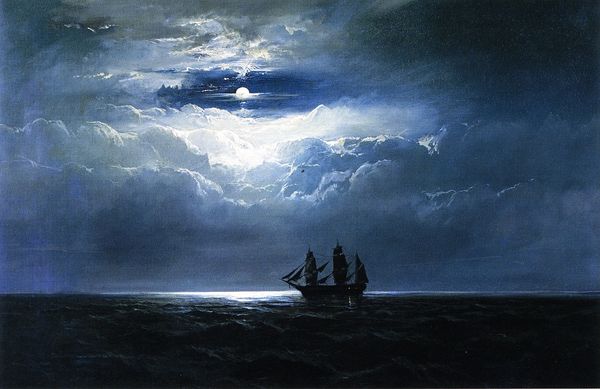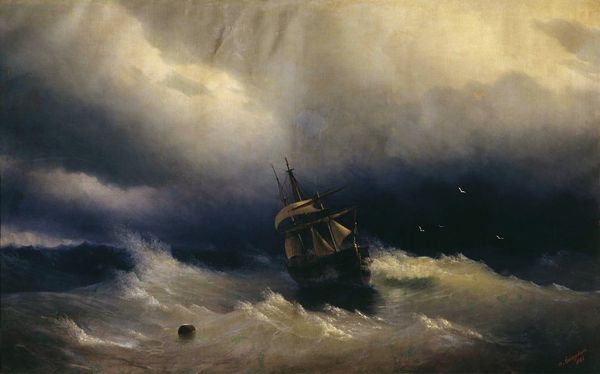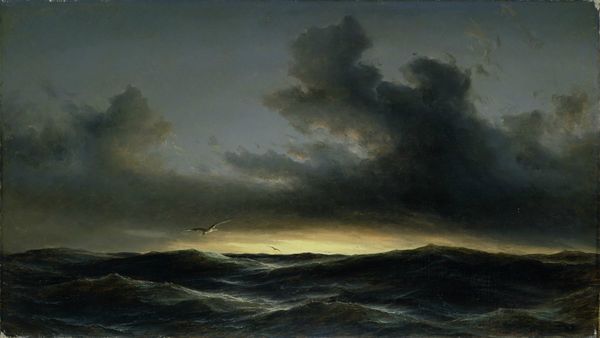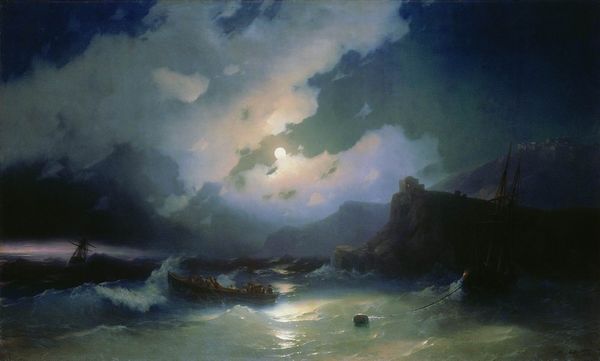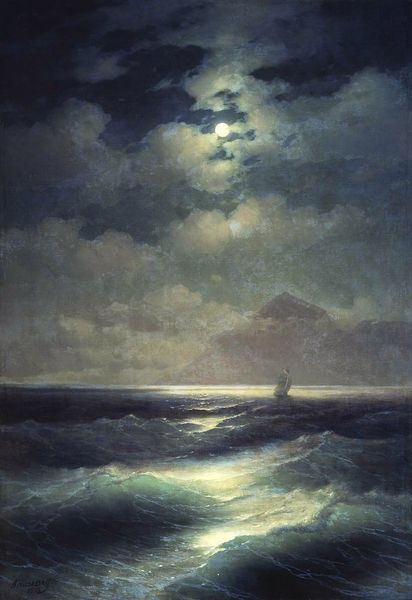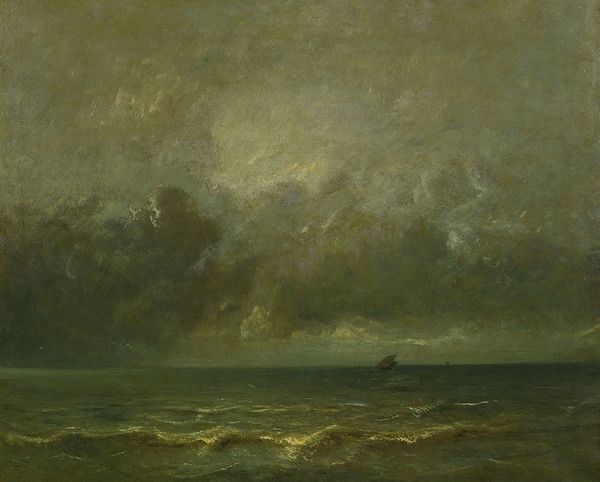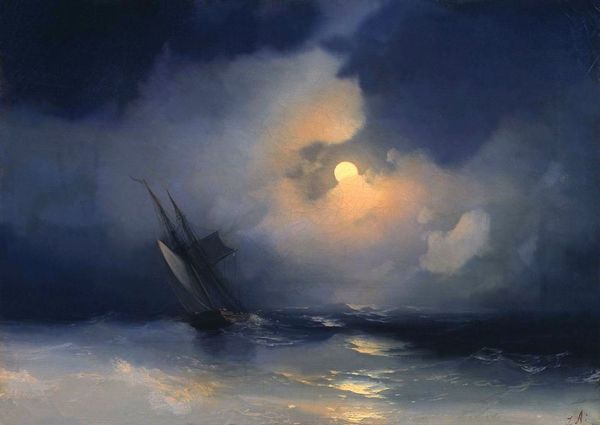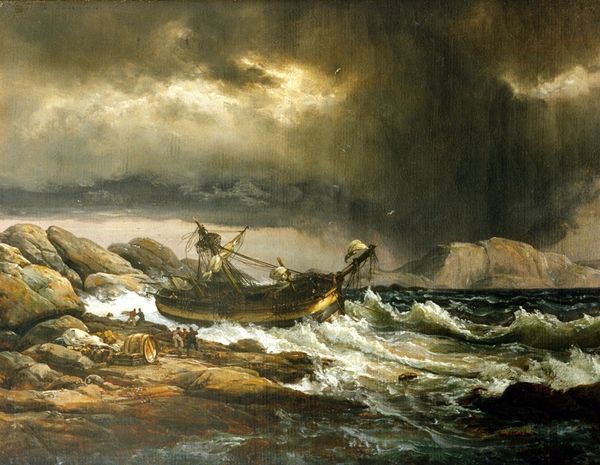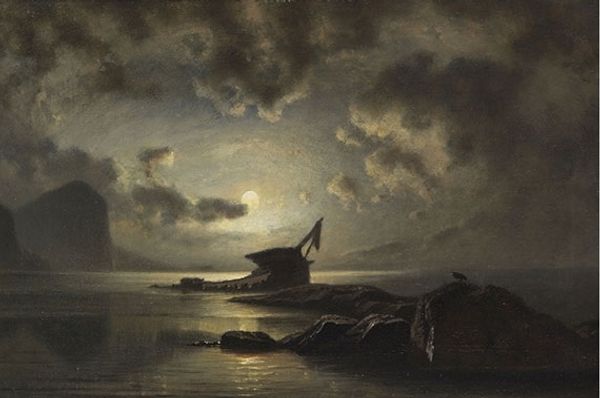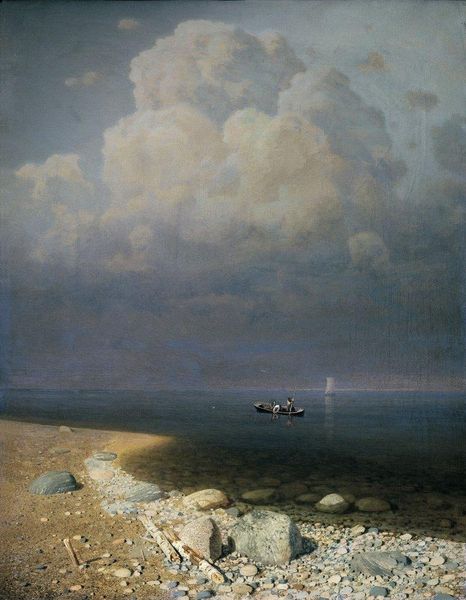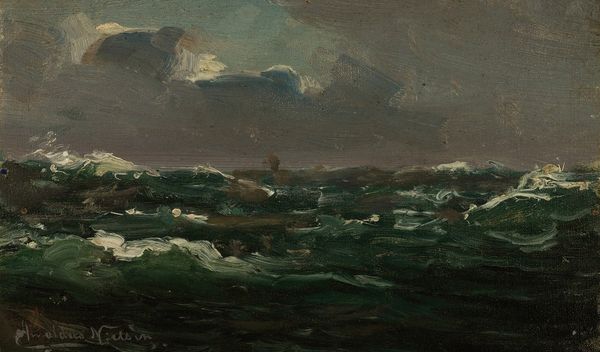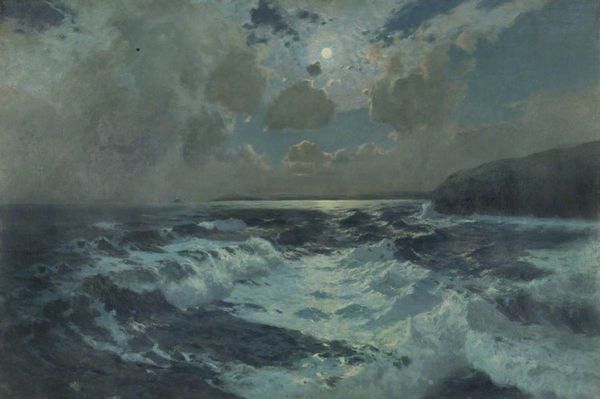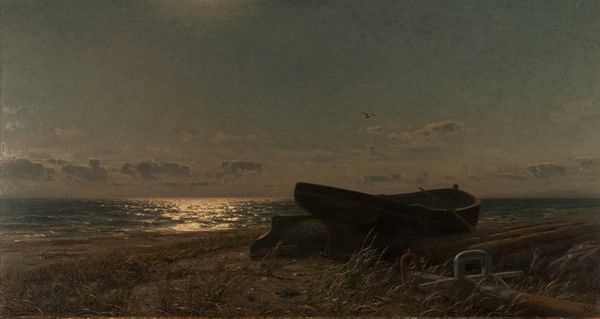
Dimensions: 91 x 65 cm
Copyright: Public domain
Curator: Immediately, this landscape gives me the shivers! So stark, so seemingly full of foreboding. The scale of the sea compared to the small human figure is definitely imposing. Editor: That's exactly the kind of feeling Knud Baade aimed for. The piece, titled "Moonlight on the Norwegian Coast," was completed in 1876. Using oil paints, Baade taps into the Romantic tradition. Notice how the painting positions the viewer on the shore, seemingly within nature's grasp? Curator: You're right. It feels like we are experiencing this directly, not just observing it. The figure in the boat seems dwarfed, both physically and perhaps spiritually, by the immensity of nature. Is he at peace or at the mercy of it all? The symbols seem almost… overwhelming! Editor: Symbolism abounds, absolutely. Consider the moon, not merely as a celestial body, but as a potent symbol of reflection and mystery. Moonlight has long been associated with intuition, dreams, and the hidden aspects of our psyche. Curator: I'd be interested in the boat as well. What did maritime transport signify for people back then, or even for us now? Boats are symbols of journeys, both literal and metaphorical. He seems to be at the threshold between land and the great unknown. Editor: It’s fascinating how that positioning encourages different readings of the scene. Perhaps it critiques human hubris, positioning us as utterly dependent on nature’s forces, or even celebrates the sublime, tapping into powerful collective memory. Is this a heroic depiction or something more somber? I see struggle—a commentary perhaps on man’s struggle for survival in a harsh environment. Curator: I love how that inherent tension invites reflection. I can sense themes that persist even now: human resilience but also, the enduring power of nature to shape our destinies and consciousness. Editor: And beyond individual reflection, there is also cultural memory at work. Maritime life has fundamentally shaped Norwegian identity for centuries. So many historical forces converge in this seemingly simple image of one person alone on a shore. Curator: I am not sure this one left the shore better or worse. A simple image it is not, given what we now discussed together. Editor: Indeed!
Comments
No comments
Be the first to comment and join the conversation on the ultimate creative platform.
